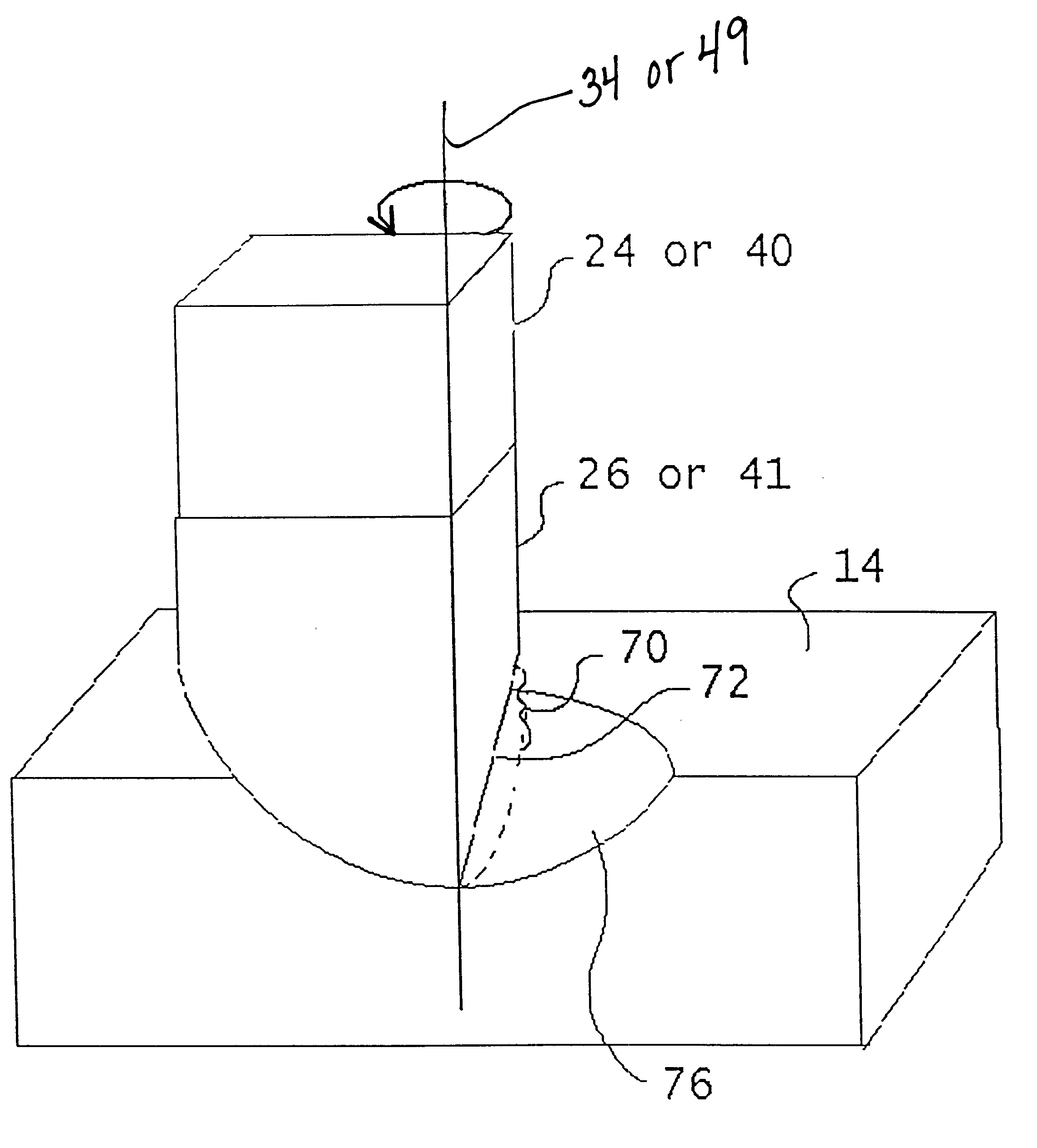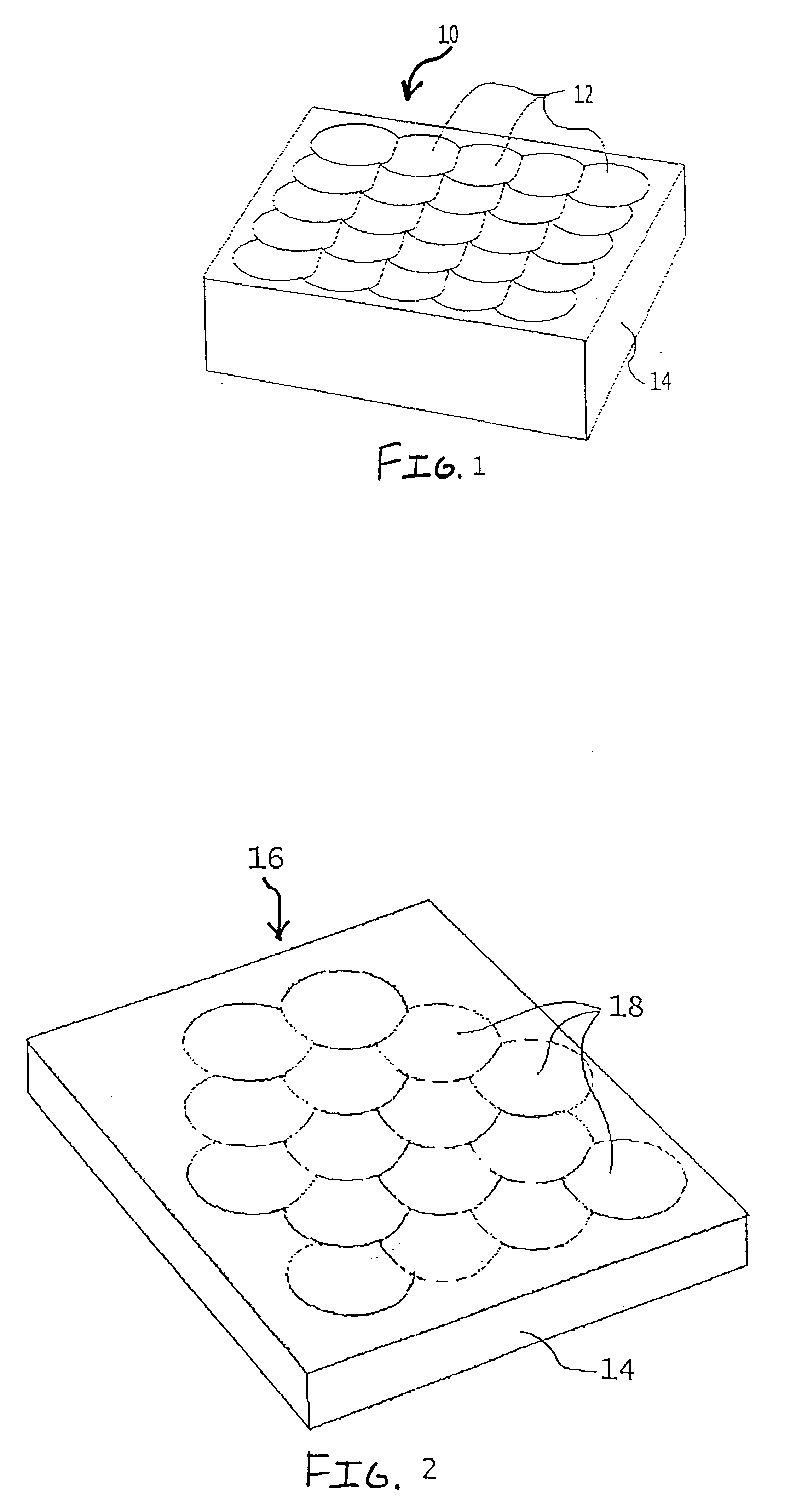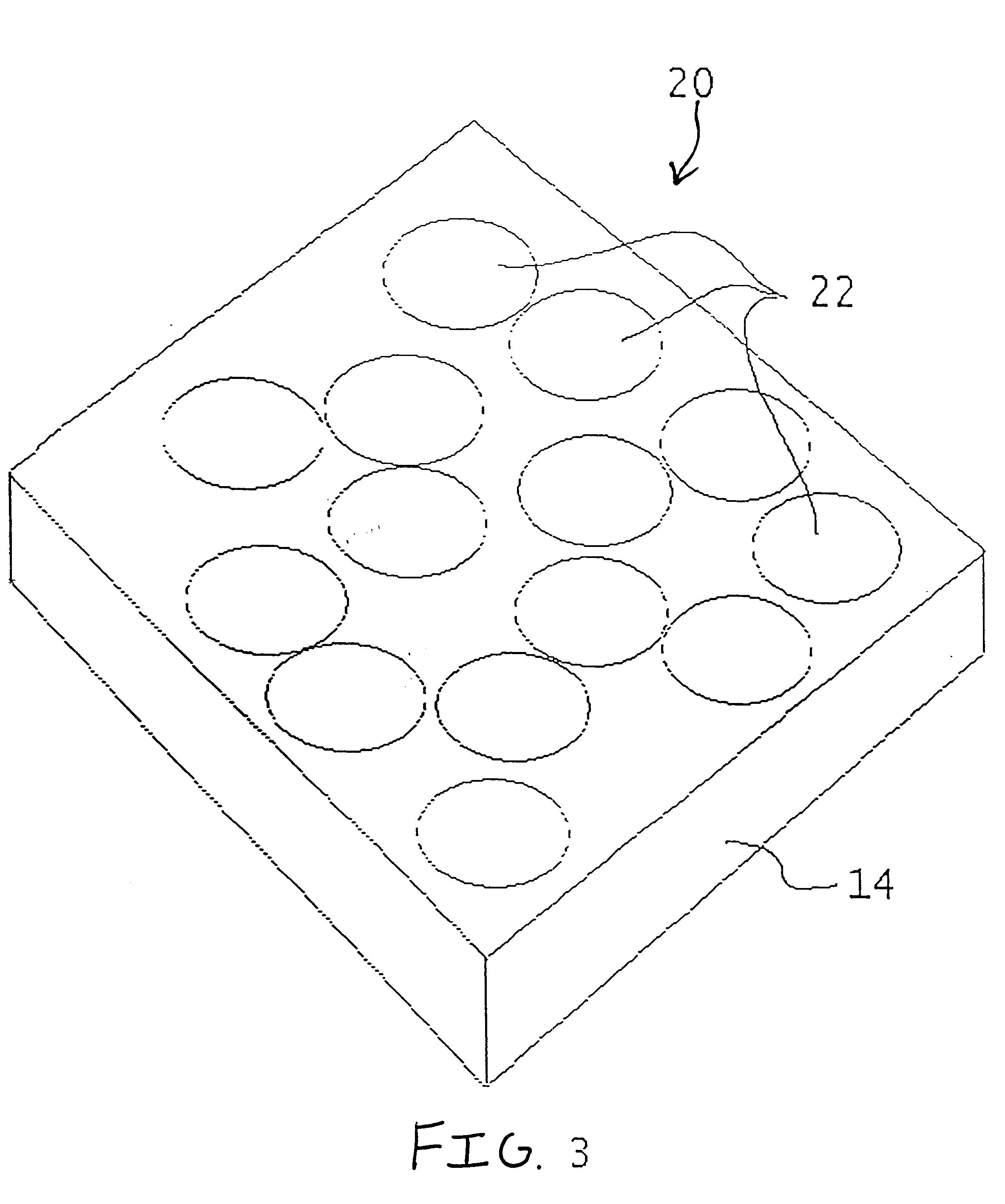Apparatus for forming a microlens mold
a technology of microlens and apparatus, which is applied in the direction of shaping cutters, manufacturing tools, instruments, etc., can solve the problems of low optical accuracy, low quality of inability to make high-quality optical surfaces in small sizes or arrays. achieve high sags, accurate optical surfaces, and high quality
- Summary
- Abstract
- Description
- Claims
- Application Information
AI Technical Summary
Benefits of technology
Problems solved by technology
Method used
Image
Examples
example 1
A microlens array mold with 80×80 microlenses was made in aluminum. The half radius diamond tool was obtained from ST&F Precision Technologies and Tools, located in Arden, N.C. The microlens surfaces were 0.250 mm across positioned in a square intersection array. The microlenses surfaces were spherical in curvature with a radius of 0.500 mm and a sag of 33 micron. Referring to FIG. 4, centering of the diamond cutting member 26 in the control member 36 was done using an iterative process where a test cut was examined under the microscope and adjustments of the location of diamond cutting member 26 were made based on the size of the center defect. Rotational speed of diamond cutting member 26 used was about 1000 rpm. Cutting fluid was purified mineral oil. The result of this process was a center defect of the machined mold of 2 micron and surface irregularity of 1 Wave (0.5 micron). Parts were subsequently injection molded, using the machined mold surface, to produce polymethylmethacr...
example 2
Similar to Example 1 with the exception that a hardened nickel-plated substrate was used for the machined mold surface.
example 3
A microlens array mold with 13×13 microlenses surfaces was made in a hardened nickel-plated substrate. The microlens surfaces were 1.30 mm across positioned in a square intersection array. The half radius diamond tool was obtained from ST&F Precision Technologies and Tools, located in Arden, N.C. The microlens surfaces were spherical in curvature with a radius of 3.20 mm and a sag of 213 micron. Centering and the machining process were the same as described in Example 1. The result was a center defect of 1.5 micron with a surface irregularity of 0.30 Wave (0.15 micron).
PUM
| Property | Measurement | Unit |
|---|---|---|
| Length | aaaaa | aaaaa |
| Displacement | aaaaa | aaaaa |
Abstract
Description
Claims
Application Information
 Login to View More
Login to View More - R&D
- Intellectual Property
- Life Sciences
- Materials
- Tech Scout
- Unparalleled Data Quality
- Higher Quality Content
- 60% Fewer Hallucinations
Browse by: Latest US Patents, China's latest patents, Technical Efficacy Thesaurus, Application Domain, Technology Topic, Popular Technical Reports.
© 2025 PatSnap. All rights reserved.Legal|Privacy policy|Modern Slavery Act Transparency Statement|Sitemap|About US| Contact US: help@patsnap.com



